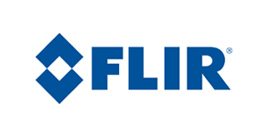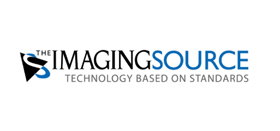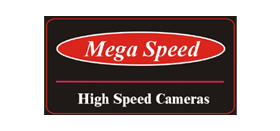While privacy concerns have been a factor for years, it turns out that if you put a useful application in front of the machine vision’s algorithm —i.e., you make it fun — everyone’s happy. For example, a Russian music festival used a facial recognition algorithm to supply attendees with photos of themselves from the event, while a firm in Singapore is developing a transport ticketing system that uses voluntary facial recognition to charge commuters as they pass through fare gates.
It helps that consumers have face detection technology in the palm of their hands. Mobile applications such as FaceLock scan a user’s face in order to unlock apps on their smartphone or tablet. Furthermore, a recent patent filed by Apple suggests that the next generation iPhone will have “enhanced face detection using depth information.” Users also are relying on facial recognition for critical tasks such as mobile banking and commerce.
The projected growth of facial recognition and other biometrics usage reflects these trends. Facial recognition market size is estimated to rise from $3.3 billion in 2016 to $6.84 billion in 2021. Analysts attribute the growth to an expanding surveillance market, increasing government deployment, and other applications in identity management. The machine vision industry is starting to find ways to capitalize on the growth opportunities in facial recognition, whether it’s a camera calibrated to work in low light or a mobile app that helps police officers catch suspects. But the technology needs to overcome a few hiccups first.
To Redact and Serve
Suspect Technologies, a startup in Cambridge, Massachusetts, has developed advanced facial recognition algorithms, but for two very different purposes within law enforcement. One use addresses the privacy considerations around body cameras worn by police officers. The most frequently cited goal of body worn video (BWV) is to improve law enforcement accountability and transparency. When someone files a Freedom of Information Act request to acquire one of these videos, law enforcement agencies must promptly comply.
But they can’t do that without first blurring the identities of victims, minors, and innocent bystanders, which typically has been a slow, tedious process restricted to video specialists. Suspect Technologies’ automated video redaction (AVR) software, available on cameras manufactured by VIEVU, is optimized for the real-world conditions of BWV — most notably high movement and low lighting. The technology, which can track multiple objects simultaneously, features a simple interface that allows users to add or adjust redacted objects. AVR reduces the time it takes to redact video footage by tenfold over existing methods.
Unlike AVR which covers up identities, Suspect Technologies is rolling out a mobile facial recognition app to identify suspects. “As it stands now, there’s no simple way for law enforcement to tell if someone is a wanted criminal,” says Jacob Sniff, CEO and CTO of Suspect Technologies.
Compatible with iPhone and Android devices, the company’s cloud-based watchlist recognition software has been tested on 10 million faces. The algorithm takes advantage of better facial recognition accuracy, which increases tenfold every four years. “Our goal is to be 100% accurate on the order of 10,000 identities,” Sniff says.
Suspect Technologies will start by customizing the product for regional law enforcement agencies in midsized towns, which typically have about 100 wanted felons. The company also plans to introduce its software to schools and businesses for attendance-oriented applications.
Cameras That Recognize
On the hardware side, the specifications of a facial recognition application are driving machine vision camera selection. “Monochrome cameras offer better sensitivity to light, so they are ideal in low-light conditions indoors and outdoors,” says Mike Fussell, product marketing manager of the integrated imaging division at FLIR Systems, Inc.(Wilsonville, Oregon). “If someone is strongly backlit or shadowed, cameras with the latest generation of high-performance CMOS sensors really shine in those difficult situations.”
For customers seeking better performance in low light, FLIR offers higher-end sensors that have high frame rates and global shutter. The entire pixel count reads out at the same time instantly, eliminating the distortion caused by the rolling shutter readout found on less expensive sensors, Fussell says. Rolling shutter cameras show distortion caused by the movement of the subject relative to the shutter movement, but they present a lower-cost alternative in low-light conditions.
Most cameras used in facial recognition are in the 3–5 MP range, according to Fussell. But in an application like a passport kiosk, where all of the variables are controlled, a lower-resolution camera is suitable. FLIR also offers stereo vision products that customers calibrate for optical tracking, which measures eye movement relative to the head. Some companies are taking the concept of facial recognition to the next level with gait analysis, the study of human motion. “In a building automation application, where you want to learn people’s habits, you could track their gait to turn lights on and off or have elevators waiting in advance for them,” Fussell says.
Facing Obstacles Head-on
For all its potential, facial recognition technology must address fundamental challenges before an algorithm reaches a camera or mobile device. According to one study, face recognition systems are 5–10 percent less accurate when trying to identify African Americans compared to white subjects. What’s more, female subjects were more difficult to recognize than males, and younger subjects were more difficult to identify than adults. ”
As such, algorithm developers must focus more on the content and quality of the training data so that data sets are evenly distributed across demographics. Testing the face recognition system, a service currently offered by the National Institute of Standards and Technology (NIST), can improve accuracy.
Once the algorithm reaches the camera, facial recognition’s accuracy is dependent upon the number and quality of photos in the comparison database. And even though most facial recognition technology Is automated, most systems require human examination to make the final match. Without specialized training, human reviewers make the wrong decision about a match half the time.
The machine vision industry, however, is no stranger to waiting for a technology to mature. Once facial recognition does that, camera makers and software vendors will be ready to supply the equipment and services for secure, accurate identity verification.
To Know More About MACHINE VISION SYSTEM, Contact MVAsia Infomatrix Pte Ltd at +65 6329-6431 or Email us at info@mvasiaonline.com
Source - visiononline.org































